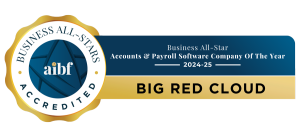Why buy local? Small businesses that depend on revenues generated by local customers sometimes have difficulty promoting their products and services. Online marketing methods show tremendous potential, but do they also work for a locally-owned business with a relatively small customer base?
Companies with a limited marketing budget can achieve remarkable results by taking advantage of the inexpensive marketing tools online. The following six ways to encourage customers to shop locally are straightforward marketing strategies within reach of every small business.
Here are the most effective shop local initiatives all businesses with a local approach should consider using.
1. Build a website with a blog
Even now, many small businesses do not have a website. Business owners can build one themselves at a low cost, and there are plenty of website-building platforms to choose from. These range in terms of cost (some are free) and capability, so be sure to do your research.
On your website, be sure to include a company blog and to write a new blog post at least once a week. Adding content to your website keeps it fresh while also giving you a boost in the search engine page rankings.
It can take time to create blog posts every week. However, you have to think about short-term necessity vs long-term goals. Getting started can be a nervous and apprehensive time. But here’s the nub of it: no one knows your specific area of expertise as well as you do. Remember, you’re not writing for the world but for a group of people who appreciate reading what you have to say. Writing is a habit, and in no time, you’ll marvel at how far you’ve travelled.
2. Distribute press releases
There are thousands of online platforms that allow business owners to submit digital press releases, but don’t ignore the value of submitting one to your local newspaper. Many publishers will print your press release in the paper and also post it on their website. It doesn’t have to be “big news” either. Just a nice little article of 400-words or less that lets the community know that you are still around.
Don’t just stick to your local printed press, either. There are plenty of media outlets and media types with a local focus. Consider guest appearances on your local radio station or even an interview on local TV channels based on your press releases. When you’re asking the question “why buy local”, those living in your area are going to want to know your thoughts.
The PR aspect should get you thinking about activities that you could engage in that would be newsworthy, such as community-based events that generate good PR. If you’re focused on brand growth, the local press can be a high-value resource.
3. Engage on social media
Almost everyone uses social media in some shape or form. Thanks to the invention of the smartphone, potential customers now use their mobiles to look for the nearest coffee shop, pizza parlour or grocery store. Pick one or two social media platforms, and start digitally interacting with the community.
There is a lot of noise and buzz on and about social media. This post advocates that, at a minimum, you interact on social media and maintain a presence. There are plenty of ways to use social media to get more visibility for your business, but consistent engagement is critical.
However, one danger of social media is that it’s so easy to post content that you can quickly overwhelm your audience. Try to limit your posts to once a day, and if that starts to lose you followers, then change things up and try posting two or three times a week instead.
4. Use video
Search engines love videos. In fact, YouTube is now the world’s second-largest search engine. Starting a YouTube channel is free, and business owners can share these videos on their websites, blogs and social media. Check out Biteable — a great value platform for creating videos for small businesses.
Why is using video an important shop local initiative? Videos are a quick and easy way to let people know more about your products in an easily-digestible format. While basic text-and-image blog posts will always appeal to a certain demographic, video remains one of the most popular forms of online content.
You don’t have to ask “why buy local” as the header of every video. Always approach every piece of content (in every format) with the intention to provide value to your local audience. This ensures that people will watch your videos, read your content and develop a brand familiarity that can only boost local sales.
5. List your business in local online directories
Google and Bing offer free listing services for locally-owned businesses. Yahoo charges a small monthly fee and lists your business in MapQuest, Yelp, Whitepages and about fifty other online locations. Check out Google My Business and Bing Places for Business to get started.
Shop local initiatives can take many forms for a local business, but directory listings are a must-have. Whenever a local customer needs something you sell, a search engine query will make you more visible if you have a presence on local and search engine directories. It’s simply a quick and easy way to provide accurate and up-to-date information about you and your business.
Not only that, but it’s also a space where your customers can leave reviews. That’s always a good opportunity to learn more about how your business is perceived. You can even use those reviews as part of your promotional materials. Positive testimonials showcased on your website are one of the best shop local initiatives to take advantage of.
6. Join the local Chamber of Commerce
Sometimes there’s nothing better than good, old-fashioned, face-to-face networking. Joining the local Chamber of Commerce gives you the chance to connect with other business owners in a similar field, meet new potential customers or perhaps develop partnerships with companies in different industries.
Interestingly, there is plenty of anecdotal evidence that meeting face to face with your peers in the business community is a great way of validating the choices you have to make. That includes selecting the online marketing channels most appropriate for your business and encouraging customers to shop locally.
For global and local businesses alike, community matters. The better your connections and the more integrated you are within your community, the stronger your business will be. Those connections are an amazing source of trade and recommendations, and the fact that everyone is working locally only strengthens a community.
Why buy local? The six shop local initiatives to use
Local businesses have a direct advantage over those globe-spanning corporations that lack the personal touch. A local business is always there, and the relationships between those businesses and their customers should always be strengthened. Using shop local initiatives and marketing strategies makes it easier than ever to make your business more visible.
When locals need what you sell, planning your marketing for local search engine optimisation means that they will be able to find you. Even if they’re new to the area or haven’t needed what you sell before, if they can find you online, they can contact you for help. And that’s why using the best shop local initiatives could be the key to more rapid business growth.
Being a local business doesn’t mean that you’re limited in what you can achieve. Professional tools used by global businesses are just as available to the smaller, more localised business model. When it comes to your finances, you can get real-time insights into your cash flow using Big Red Cloud. Talk to the team to find out more about our free trial that could transform the financial health of your local business.




